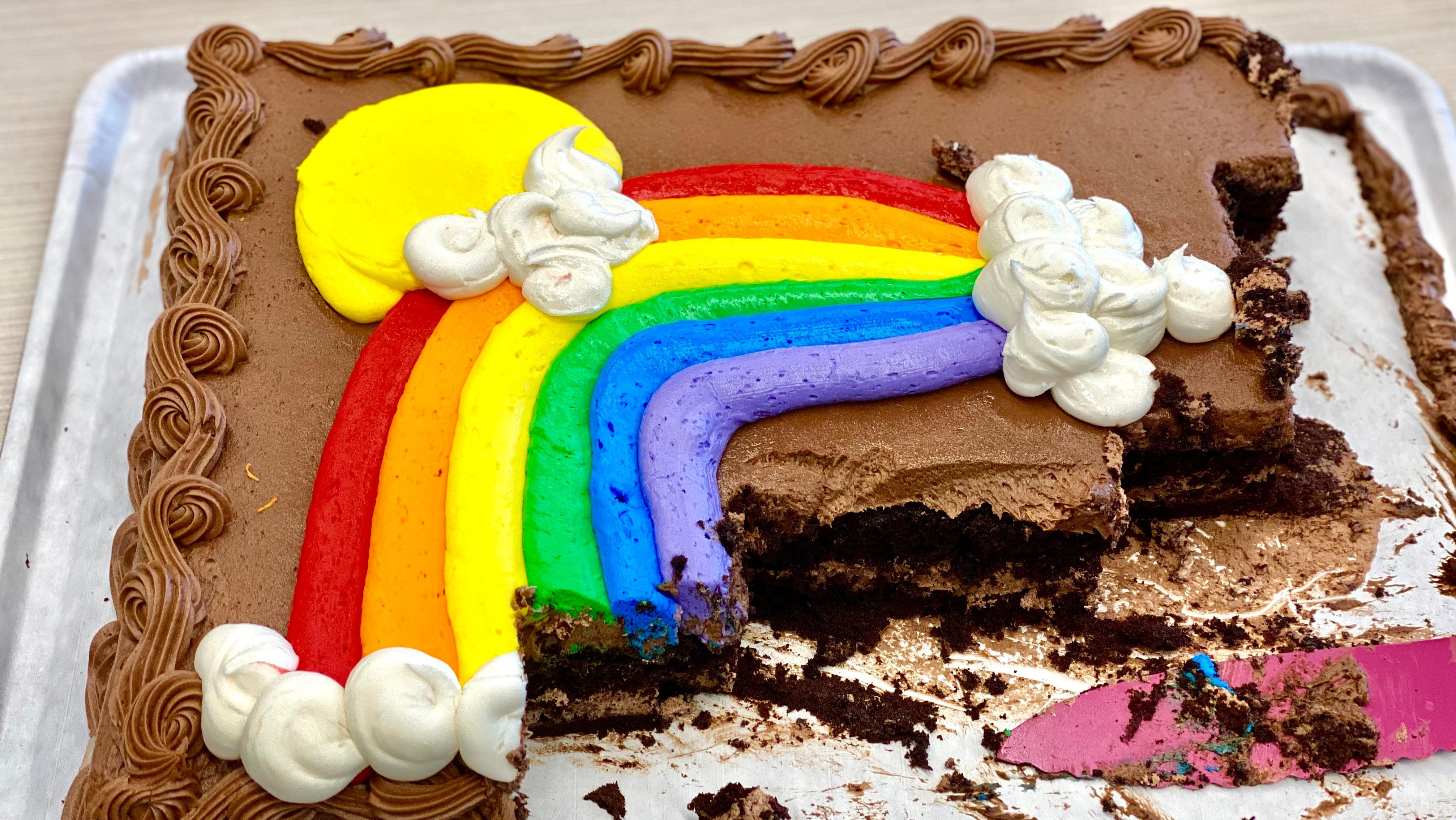Everything You Didn't Know About Grocery Store Cakes
Plus tips for getting the most value out of a humble sheet cake.
On a February episode of Mark Bittman's podcast, Food, chef Vishwesh Bhatt talks about a dinner he prepared for a friend's mother's 80th birthday. The dessert was, naturally, birthday cake—but Bhatt didn't make that part of the spread.
"I did not make the cake," Bhatt explains. "She loves the grocery store birthday cake. When an 80-year-old tells you what she likes, you provide that for her."
Bittman mulls this over. "Often, when we get together at a festive thing, I'm like, 'I want a piece of cake,'" he says to Bhatt. "I keep looking for the ideal coconut cake and so on. And now I wonder if what I'm really looking for is a nice, garbagey piece of supermarket cake."
"Everything has its place," Bhatt replies. "Everything has its place."
While I might take umbrage with Bittman's use of "garbagey," I am fully on board with the notion that grocery store cake might be the flavor all of us are chasing.
Even if you, like Bhatt, understand the virtues of supermarket cake, you might not know some secrets about how it's made, or how to enjoy it to its fullest. Here's some intel for the next time you're tasked with navigating the wide world of magically average cake.
Not all grocery store cakes are baked off-site
Although a lot of grocery store cakes are decorated in-house, they often aren't baked in house. That may be changing, though. Some grocery stores are incorporating on-site, from-scratch baking into their business model. Pat's Marketplace in Long Island, for example, is one store that has a from-scratch bakery right inside it.
Tom Vonholt, the bakery manager at Pat's, owned his own from-scratch bakery for many years before becoming the in-house baker at Pat's, and he worked in his father's bakery before that. He made the transition to grocery store baking because he was having trouble staffing his independent bakery, and Pat's wanted a from-scratch baker in house. Vonholt says younger generations are pickier about what they eat, and they want something that's made on site.
At Pat's, he handles around 400 cakes per week, about 15% of which are customized. He says the work is more fulfilling than he ever would have expected back in those days when he owned his own bakery.
"I never would have never imagined I'd work in a grocery store bakery," Vonholt said. "Never in a million years would I have thought I would have ever been out of the independent world. It's been very exciting."
The best way to order a custom cake
Custom cakes are often a matter of public intrigue. When they turn into mishaps or mistakes, they inspire whole blogs like Cake Wrecks, while the occasional triumph leads to viral social media posts. As with anything you're asking a food service worker to do, there's a right and wrong approach to ordering a custom decorated dessert.
Grocery store cake decorators are creative and capable people, and if you can come up with a coherent idea, they're often game to pull it off for you. However, you need to give them enough lead time to develop the design. Two to three weeks is the best lead time for ordering a custom cake. If you don't have that long, call or visit the bakery in person to see if they can work with your timeline. They might be able to accommodate a simplified version of your idea.
How to upgrade a non-custom grocery store cake
Not all decorations must be etched in frosting—you can add all sorts of decorations to the surface of a cake to personalize it, many of which don't require the baker's help. Some of the ideas here are relatively simple and have a surprisingly stellar effect, such as sticking flowers (food-safe ones!) in the top of the cake or placing a few toys on top for children's birthday parties.
You can also mess around with the cake's very structure to make it altogether more exciting. By sneakily hollowing out the center of a round cake, filling it with sprinkles, and hiding the hole with frosting on top, you can turn a regular buttercream cake into a surprise sprinkle cake. Who knew?
Last year, my family was going through a rough time while a relative battled an illness, and my daughter's second birthday landed in my very unprepared lap. I went to the local Hannaford and found a cake with just enough of a unicorn color palette that I was able to pair it with a unicorn candle set; with a little bit of black decorator gel, I was able to create a cake that looked custom but was definitely not. It was reliably delicious, and no one could tell I had scraped it together at the last minute. The experience left me with a deep and lasting gratitude for grocery store cakes.
The cheater’s guide to making a custom cake
If you want to get really fancy, but not too fancy, you can also buy a disassembled cake at the grocery store and create the final product yourself. For me, the intimidating part is the decorating, not the baking—but for a creative person who's not confident in their culinary skills, it could be the perfect solution.
Decorating a pre-baked cake has a lot of advantages: For one thing, the cake has already been leveled, meaning you don't have to have a serrated knife and lazy susan on hand to slice any pesky domes. It's also cheaper, since you're not paying for the extra labor of a skilled grocery store decorator. Finally, it offers a lot of control. If you're not sure you can communicate your vision to a store bakery employee over the phone, you can take matters into your own hands. The flavor, meanwhile, is still the grocery store standard we all know and love.
